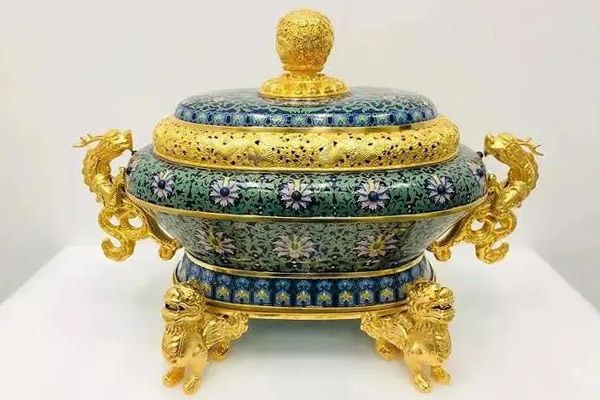Intangible culture with Related Tags

Cloisonné production techniques
Beijing cloisonné technique is also known as "copper-based cloisonné enamel". It was named "cloisonné" because it matured during the reign of Emperor Jingtai of the Ming Dynasty. The technique is to use copper as the base, flatten the thin copper wire and make various patterns by hand, pinch, weld and stick it on the body, and then apply enamel glaze. After firing, polishing, gilding and other processes, the finished product is finally made. Cloisonné technique is the product of the combination of foreign enamel technique and local metal enamel technique. In the Ming and Qing dynasties, the Imperial Household Supervision and the Imperial Household Department both set up enamel workshops in Beijing dedicated to the royal family, and the technique went from maturity to glory. In modern times, due to social unrest, Beijing cloisonné technique once declined. After 1949, due to the active protection and support policies adopted by the state, this ancient technique was rapidly restored and developed. Beijing cloisonné technique is complex and has many processes. It combines bronze and enamel techniques, inherits traditional painting and metal engraving techniques, and reflects the tradition of mutual learning and reference between traditional Chinese crafts. Cloisonné products are elegant in shape, elaborate in patterns, and colorful in color. They have the characteristics of court art, giving people an artistic feeling of "roundness, firmness, and golden splendor". They have high artistic value and have participated in many important exhibitions at home and abroad, winning honors for the motherland. They are also often presented as state gifts to foreign guests. Under the impact of the market economy, due to the poor operation of some practitioners, the artistic quality and skill level of Beijing cloisonné have declined, and a large number of inferior products have flooded the market, which has a bad impact. The authentic cloisonné production factories are either bankrupt or endangered, and there are only a few cloisonné production masters and successors with superb skills. If they are not rescued and protected, this excellent skill will decline or even be lost.
Traditional Chinese medicine preparation method (Angong Niuhuang Pills preparation technique)
Traditional Chinese medicine preparations are made from Chinese medicine as raw materials under the guidance of traditional Chinese medicine theory and are processed into medicines with certain specifications that can be directly used for disease prevention and treatment. The most representative traditional dosage forms are pills, powders, pastes, and pills. For thousands of years, traditional Chinese medicine preparations have accumulated rich experience and formed unique preparation technology in the medical practice of successive generations of doctors. They are an important part of the treasure house of traditional Chinese medicine. Tongrentang Angong Niuhuang Pills have been passed down with written records for nearly 150 years. During these more than 100 years, Tongrentang has organically combined its own pharmaceutical technology with the pharmaceutical standards of the Qing Imperial Pharmacy, traditional Chinese medicine culture, and Chinese culture, forming the traditional production skills of Angong Niuhuang Pills with Tongrentang's unique characteristics.